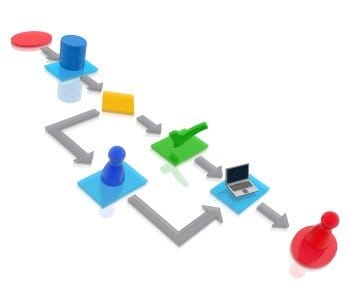Personal Time, And Business Process Management

This is a guest post from Elliot Ross. Elliot blogs about business technology issues for non-technology managers in the small to medium enterprise.
Before I go any further, in the context of this post, I am using the term System in the context of Systems Theory that defines that parts may be independent, they also are interacting. And Process as the routine set of procedures that convert any item or interaction from one form to another.
With those definitions in mind, let me ask you a personal question; As a manager or executive, if you saw some of these traits in one of your team;
a) Things fall through the cracks
b) Regularly missed deliverables
c) Problems keeping up with tasks and communication
Would you recommend some remedial action? perhaps some discipline in personal time management? Improving this personal time management system, or process can be as simple as improving calendaring and that morning checklist.
Is it any different in our business?
a) Things also fall through the cracks
b) Time is lost in complex tasks as no one knows what is next
c) Tasks are repeatedly redone due to errors or omissions
When tasks are performed, and they are performed more than once, they can benefit from a system and process that clearly delineates the next steps, the task responsibility, and they provide visibility across organizational structures. Similar to our personal time management, systems and processes can provide your teams with a path to follow, provide your teams with the how in the performance of tasks and the visibility into what is next, and they can also show where bottlenecks (or friction) are consuming and wasting time.
Designing systems or processes that improve this interaction can be home grown, or they can be created leveraging existing pratices such as the ISO or ITIL frameworks. The benefits include increasing quality in consistently and repeatedly performed tasks, avoiding those tasks or events falling through the cracks, and provide a view of where friction is slowing the input or output of tasks or events. This friction being time lost, not within a task itself, but in the transfer, or hand-off to the next step of the task.
As an example of significant friction loss, a number of years ago I was assisting with the the implementation of a line of business software tool for a large organization. It took weeks to just get an IP address for a new database instance! Why? Because the network operations team, server team, and database team could not overcome this internal friction. The server team needed an IP Address from the Network team so the database team could bind an instance. But there was zero visibility or recourse as to why that IP address was not forthcoming.
And that was just within their IT organization! What would happen if input was required from operations, facilities, or marketing?
A Question
If process is a routine, Will this routine, this ‘sameness’ kill creativity and vision?
Will we be forcing people into stagnation? Perhaps punishing them for stepping outside the lines?
You could be.
As a respected senior IT executive once told me; if your process or system begins to look like a gospel, or religious zealotry, you have lost sight of all but working on your process – not the benefit that the system or process was supposed to provide.
Many of us have witnessed this zealotry, 20 years ago there were the gospels of mainframe vs. UNIX vs. Novell NetWare. And this has not changed with time, today’s gospels include open source or Mac vs PC.
Systems or processes cannot be written onto stone tablets. A key, but often overlooked piece of any system or process is one question; What are the opportunities for improving this system or process?
To be a living, breathing part of your business, systems must continually adapt to changing conditions, goals, and strategies. To be blunt, they may even need to completely ripped out and replaced. (an improvement in the process of making buggy whips is a low differentiating strategy today)
The Takeaway
In managing our personal time, or business tasks, systems or process can improve quality and consistency, while reducing errors and omissions.
But we must avoid the system or process becoming the end in itself. If the care and feeding of the tool becomes more important than what the tool was supposed to solve, you have lost any benefit of that system or that process.
PS: If the phrase “But that’s the way we have always done it around here” is ever heard in your business, the system,or process has lost its ability to adapt. Rigidly following the system or process has become more important than the benefit they were designed to provide.
About Elliot:
Elliot blogs about business technology issues for non-technology managers in the small to medium enterprise at http://elliotross.wordpress.com. Elliot has 15 years experience applying technology to support business goals. With experience implementing both ISO 9000 and ITIL process management frameworks. This experience has shown that people, process, then technology is key to the strategic application of technology.



Comments ()